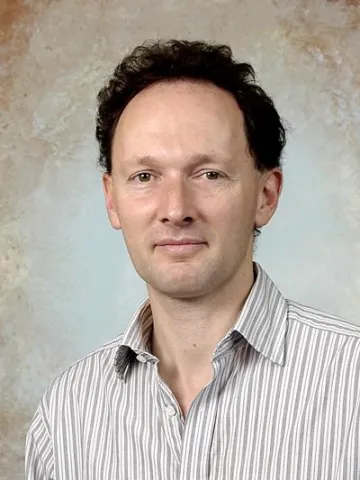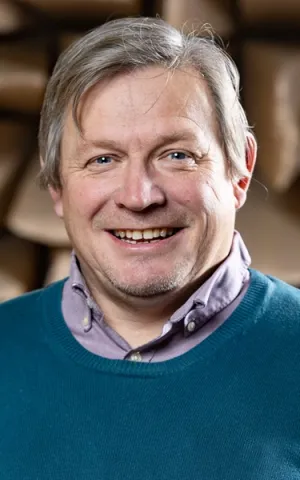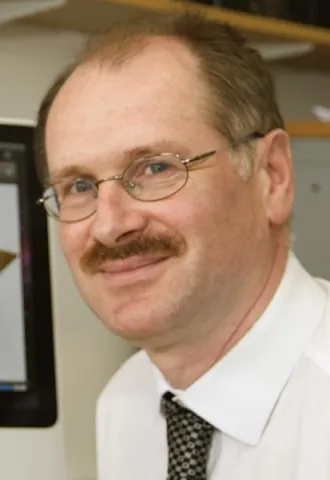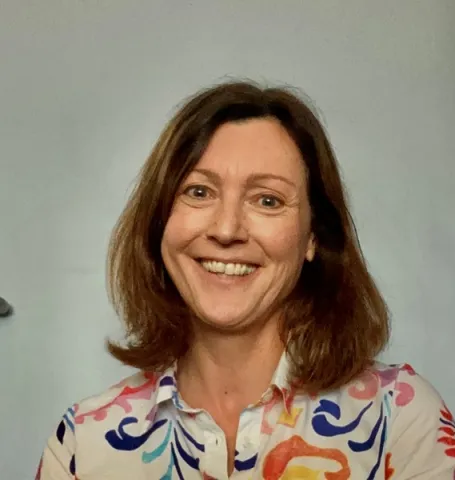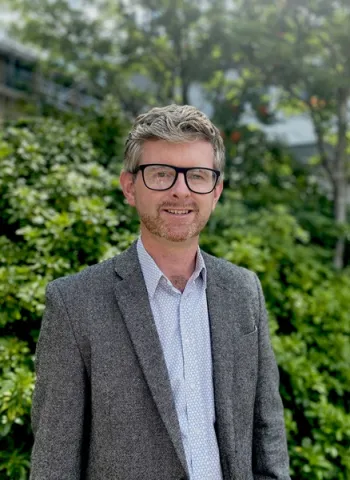Project overview
Carbon dioxide Capture and Storage (CCS) is an important strategy in mitigating anthropogenic CO2 emissions. All credible climate change scenario models indicate that CCS will be essential to meeting the internationally agreed targets set by the UNFCCC Paris Agreement in 2015, which aims to limit global warming to 2º C relative to pre-industrial levels. The European Union’s commitment to the Paris Agreement involves reducing carbon emissions by 85-95% by 2050, with the greater ambition of becoming carbon neutral by 2050 in order to limit global temperature rise to 1.5ºC. The EU’s “Clean Energy for all Europeans” package, published in 2019, clearly identifies CCS as a critical step towards achieving a climate-neutral economy.
The aim of CCS is to capture CO2 from large emission sources, such as power stations and industrial facilities, transport it to a storage site and permanently lock it away so that it cannot be released into the atmosphere. CCS storage sites are usually geological formations deep underground, either onshore or offshore.
The Strategies for Environmental Monitoring of Marine Carbon Capture and Storage (STEMM-CCS) project was funded under the European Union’s Horizon 2020 programme to address the current knowledge and capability gaps in approaches, methodologies and technology required for the effective environmental monitoring of offshore carbon capture and storage (CCS) sites. Drawing on a broad range of expertise from researchers in 14 institutions, including Shell as the principal industry partner, the project undertook extensive research into a range of CCS-relevant issues including: the establishment of accurate environmental baselines; better understanding of fluid flow pathways in the sub-seafloor and their implications for reservoir integrity; methodologies for detecting, tracing and quantifying CO2 leakage in the marine environment, and the development and testing of new technologies to enable cost-effective monitoring of marine CCS operations.
Central to the project was the STEMM-CCS controlled release experiment – the first sub-seafloor release of CO2 to be carried out under real life conditions. Implemented at a site near the Goldeneye platform in the North Sea, this experiment successfully simulated a CO2 reservoir leak scenario and demonstrated that the leak could be successfully detected and quantified using the range of instruments, tools and techniques developed during the project.
In summary, STEMM-CCS has successfully developed and tested a robust methodology for establishing environmental and ecological baselines under ‘real life’ conditions. It has developed a suite of cost-effective tools to identify, detect and quantify CO2 leakage from a sub-seafloor CCS reservoir, including an assessment of the utility of chemical tracers in the marine environment. Results have enabled the modelling and assessments of the local, regional and wider impacts of different reservoir CO2 leak scenarios, including the potential role that fluid pathways in the shallow subsurface may play in reservoir integrity, and a decision support tool has been developed to assist operators in monitoring, mitigation and remediation actions. STEMM-CCS has delivered best practice for selection and operation of offshore CCS sites, and results have been shared with industrial and regulatory stakeholders in order to help increase confidence in the physical security of CCS, and to support the European Union’s progress towards a carbon neutral society.
The aim of CCS is to capture CO2 from large emission sources, such as power stations and industrial facilities, transport it to a storage site and permanently lock it away so that it cannot be released into the atmosphere. CCS storage sites are usually geological formations deep underground, either onshore or offshore.
The Strategies for Environmental Monitoring of Marine Carbon Capture and Storage (STEMM-CCS) project was funded under the European Union’s Horizon 2020 programme to address the current knowledge and capability gaps in approaches, methodologies and technology required for the effective environmental monitoring of offshore carbon capture and storage (CCS) sites. Drawing on a broad range of expertise from researchers in 14 institutions, including Shell as the principal industry partner, the project undertook extensive research into a range of CCS-relevant issues including: the establishment of accurate environmental baselines; better understanding of fluid flow pathways in the sub-seafloor and their implications for reservoir integrity; methodologies for detecting, tracing and quantifying CO2 leakage in the marine environment, and the development and testing of new technologies to enable cost-effective monitoring of marine CCS operations.
Central to the project was the STEMM-CCS controlled release experiment – the first sub-seafloor release of CO2 to be carried out under real life conditions. Implemented at a site near the Goldeneye platform in the North Sea, this experiment successfully simulated a CO2 reservoir leak scenario and demonstrated that the leak could be successfully detected and quantified using the range of instruments, tools and techniques developed during the project.
In summary, STEMM-CCS has successfully developed and tested a robust methodology for establishing environmental and ecological baselines under ‘real life’ conditions. It has developed a suite of cost-effective tools to identify, detect and quantify CO2 leakage from a sub-seafloor CCS reservoir, including an assessment of the utility of chemical tracers in the marine environment. Results have enabled the modelling and assessments of the local, regional and wider impacts of different reservoir CO2 leak scenarios, including the potential role that fluid pathways in the shallow subsurface may play in reservoir integrity, and a decision support tool has been developed to assist operators in monitoring, mitigation and remediation actions. STEMM-CCS has delivered best practice for selection and operation of offshore CCS sites, and results have been shared with industrial and regulatory stakeholders in order to help increase confidence in the physical security of CCS, and to support the European Union’s progress towards a carbon neutral society.
Staff
Lead researchers
Other researchers
Collaborating research institutes, centres and groups
Research outputs
Ben Roche, Jonathan Bull, Hector Marin Moreno, Timothy Leighton, Ismal H. Falcon-Suarez, Madeline Tholen, Paul White, Giuseppe Provenzano, Anna Lichtschlag, Jianghui Li & Michael, John Faggetter,
2021, International Journal of Greenhouse Gas Control, 109
Type: article
Jianghui Li, Paul White, Ben Roche, Jonathan Bull, namrip Leighton, John Davis & Joseph Fone,
2021, International Journal of Greenhouse Gas Control, 108
Type: article
Jianghui Li, Paul White, Jonathan Bull, Timothy Leighton, Ben Roche & John Davis,
2021, International Journal of Greenhouse Gas Control, 108
Type: article
Romina A.S. Gehrmann, Giuseppe Provenzano, Christoph Böttner, Héctor Marín-Moreno, Gaye Bayrakci, Yee Y. Tan, Naima K. Yilo, Axel T. Djanni, Karen A. Weitemeyer, Timothy A. Minshull, Jonathan M. Bull, Jens Karstens & Christian Berndt,
2021, International Journal of Greenhouse Gas Control, 109
Type: article
Ismael Hilmar Falcon-Suarez, Anna Lichtschlag, Hector Marin-Moreno, Giorgos Papageorgiou, Sourav K. Sahoo, Ben Roche, Ben Callow, Romina A.S. Gehrmann, Mark Chapman & Laurence North,
2021, International Journal of Greenhouse Gas Control, 108
Type: article
Adam Robinson, Ben James Callow, Christoph Böttner, Naima Karolina Yilo, Giuseppe Provenzano, Ismael Himar Falcon-Suarez, Hector Marin Moreno, Anna Lichtschlag, Gaye Bayrakci, Romina Gehrmann, Lou Parkes, Ben Roche, Umer Saleem, Bettina Schramm, Malin Waage, Aude Lavayssiere, Jianghui Li, Farid Jedari Eyvazi, Sourav Sahoo, Christian Deusner, Elke Kossel, Timothy Minshull, Christian Berndt, Jonathan Bull, Marcella Dean, Rachael James, Mark Chapman, Angus I. Best, Stefan Bünz, Baixin Chen, Douglas Connelly, Judith Elger, Matthias Haeckel, Timothy Henstock, Jens Karstens, Calum Macdonald, Juerg Matter, Laurence J North & Benedict Reinardy,
2021, International Journal of Greenhouse Gas Control, 106
Type: article
Jianghui Li, Ben Roche, Jonathan Bull, Paul White, Timothy Leighton, Giuseppe Provenzano, Marus Dewar & Timothy Henstock,
2020, Journal of Geophysical Research: Oceans, 125(9)
DOI: 10.1029/2020JC016360
Type: article
